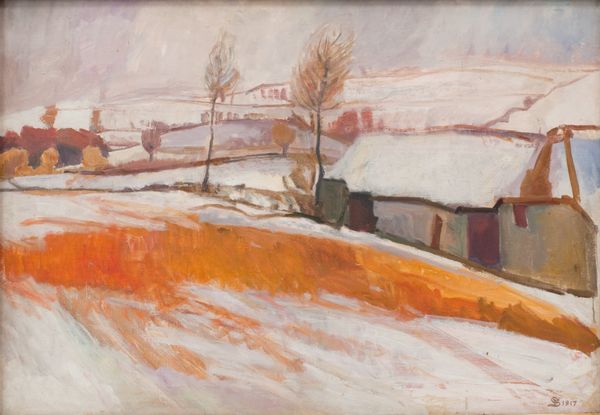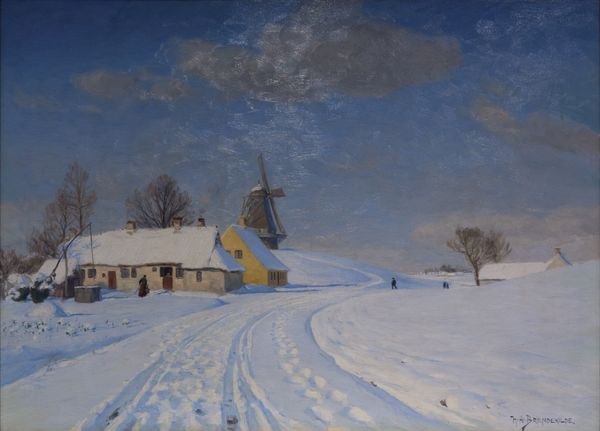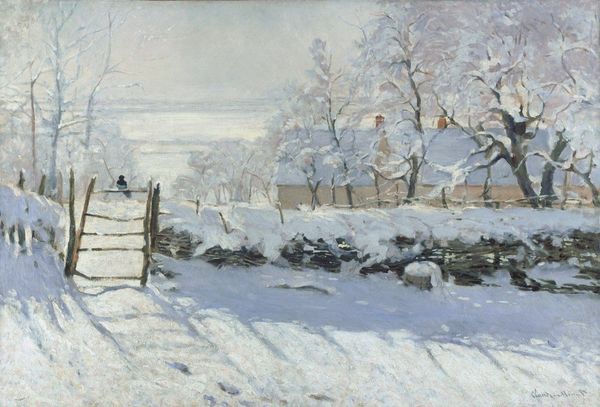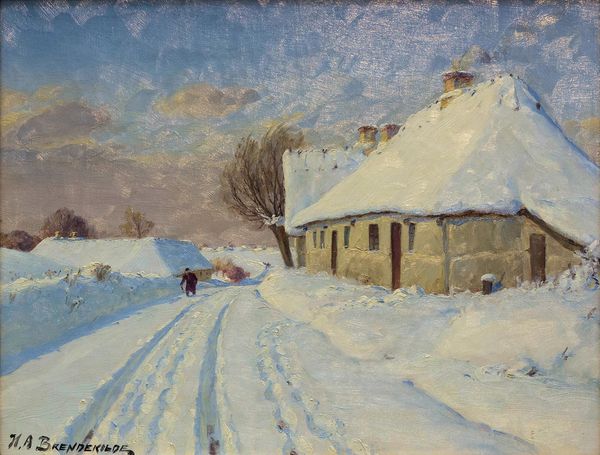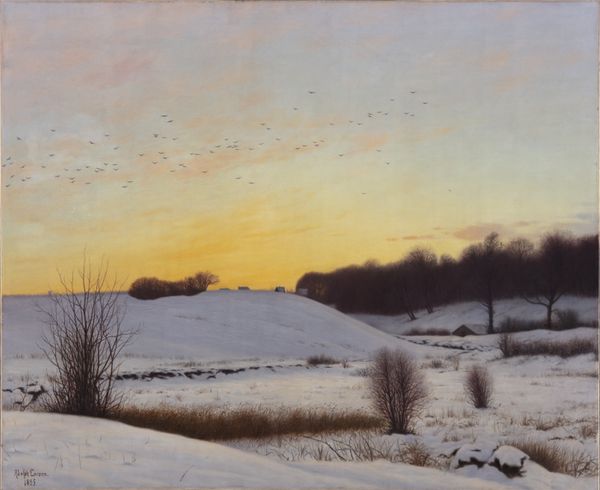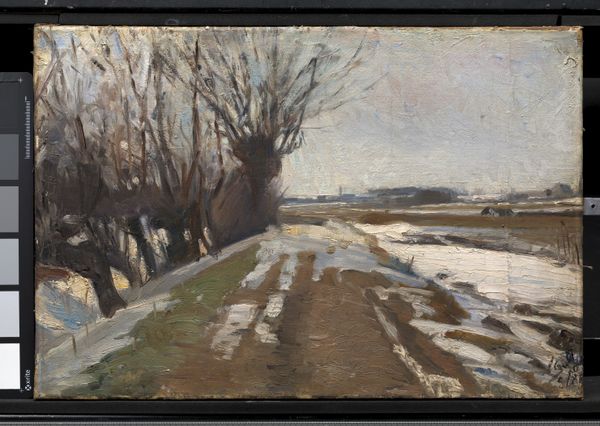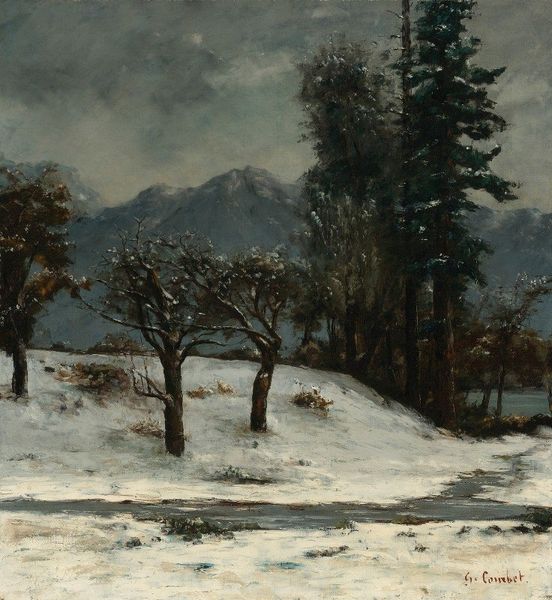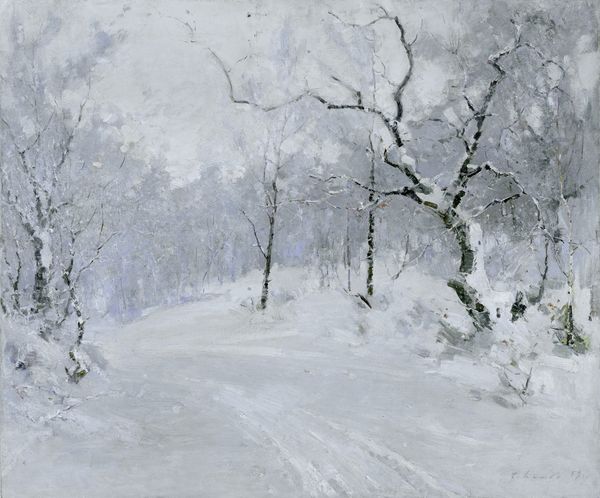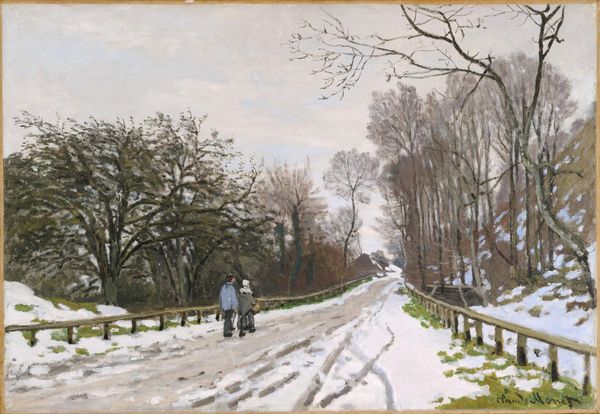
Dimensions: 62.5 cm (height) x 82 cm (width) (Netto), 76.6 cm (height) x 94.3 cm (width) x 7.4 cm (depth) (Brutto)
Editor: We’re looking at Fritz Syberg’s "Snow-Covered Highroad in the Sunshine," painted in 1895 using oil on canvas. The scene is simple – a snow-laden road leading into the distance. It’s quiet, almost dreamlike in its pale palette. How do you read its formal qualities? Curator: The reduction of color contributes significantly to the overall impact. Observe how Syberg masterfully employs varying shades of white, grey and blue to depict the snow’s texture and the light’s reflection. The composition relies on the road’s recession to create depth, leading the eye through a series of carefully placed visual anchors, namely the bare trees and the muted suggestion of houses. Note the surface's almost granular texture. What could that materiality imply about Syberg’s methodology? Editor: It looks like the paint was applied very thickly in places. Perhaps he worked quickly, capturing a fleeting moment? Curator: Indeed. The impasto technique enhances the sense of immediacy and direct observation, core to plein-air painting. This aligns perfectly with Impressionistic principles where the focus is capturing the ephemeral qualities of light and atmosphere, prioritizing sensation over meticulous detail. Do you notice how the brushstrokes, while distinct, blend seamlessly to evoke the soft, diffused quality of a winter’s day? Editor: Yes, the softness really emphasizes the tranquility of the scene. I appreciate how analyzing these techniques clarifies the overall impact. Curator: Exactly. By examining these formal aspects—texture, composition, and color—we move closer to understanding Syberg's aesthetic intentions. He has orchestrated the elements of his craft with acute awareness.
Comments
No comments
Be the first to comment and join the conversation on the ultimate creative platform.

